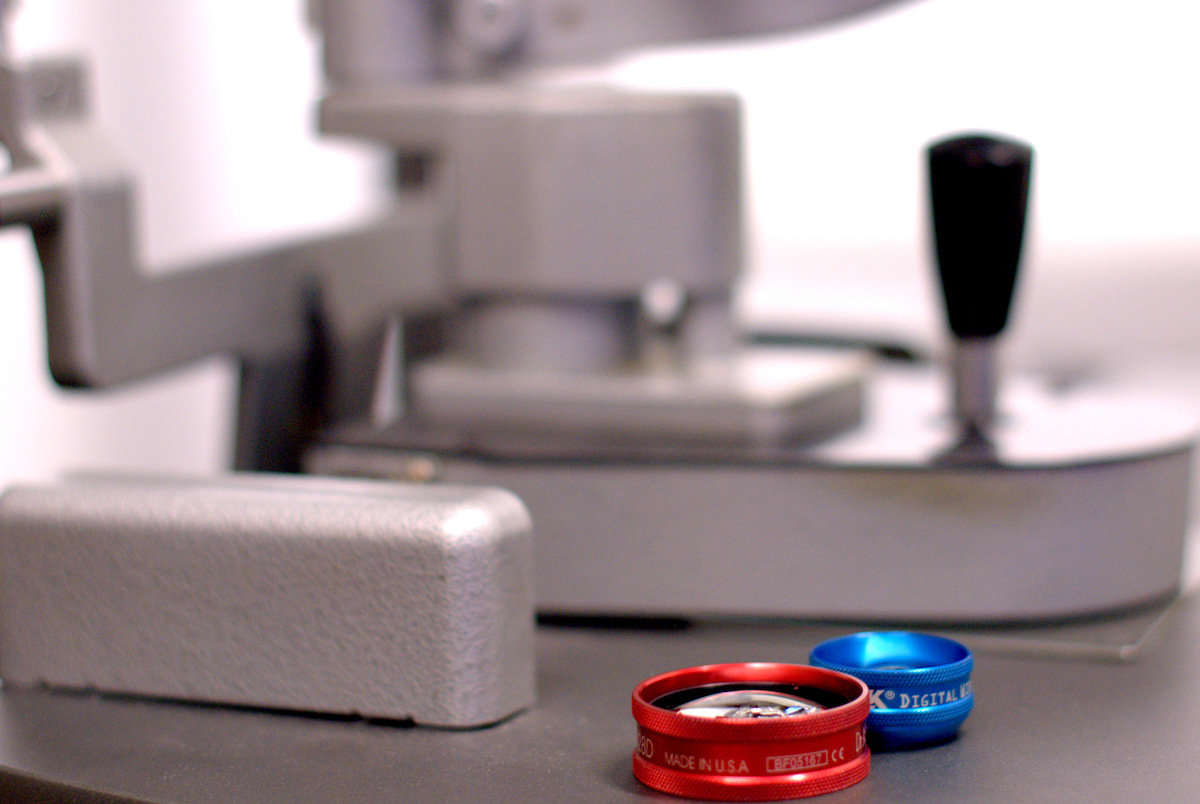What are flashes and floaters?
By middle age, most people see small dark shapes that appear to float in their field of vision. These are called floaters. They are particles in the vitreous body, a jelly-like substance that fills the inside of the eye. The vitreous body is attached to the retina, the layer of light-sensitive tissue at the back of the eye. Floaters appear because they cast shadows on the retina.
Small flashes of light may be seen with or without floaters. Flashes are usually caused by the vitreous tugging on the retina. This tugging occurs when the vitreous body shrinks with age.
The shrinking vitreous body often separates from the retina. This is called a Posterior Vitreous Detachment (PVD). There may be a bleed inside your eye associated with a PVD, called a ‘Hemorrhagic PVD’.

When should I see my eye doctor?
Floaters and flashes are usually just annoying, not harmful. However, the sudden onset of many new floaters or flashes could be a warning of looming serious eye problems, including tears of the retina or a retinal detachment.
You are at more risk of tears and detachment of the retina if you:
- Are older
- Have had previous eye surgery
- Have had a detachment in your other eye
- Have had a recent injury to your eye or head
- Have family history of retinal detachments
- Wear or used to wear glasses for short-sightedness (myopia)
- Have certain other medical conditions, such as diabetes. Check with your regular doctor about your risk.
If you have worsening flashing lights, floaters or a shadow in your vision, you should urgently see your regular optometrist or eye doctor.
Your regular eye doctor can check for a retinal detachment in their clinic. If they are concerned, they will send you to Dr Sharma, a retinal surgeon, for review and possible treatment.
Treatment
Retinal Detachment
In case your flashes and floaters are associated with a retinal detachment, then you may need urgent surgery. Please see this section.
Retinal tear or hole – Laser Retinopexy
If a tear in the retina is found on examination, and there is no retinal detachment, then the safest treatment is by laser. The laser beam is focused on the area to be treated. As tiny burns made with the laser heal, the scar tissue seals the tear.
We follow you up closely in the first couple of months to make sure that you don’t develop new tears or a detachment.
Floaters – Observe
New floaters can take up to three months to become smaller and less bothersome. If they do not trouble you, then there is no need to remove them.
The safest way to remove large persistent floaters that obstruct your central vision, or affect your daily life and work, is through vitrectomy surgery. We use the latest small, minimally invasive instruments at our surgical facility to remove the floaters, and replace it with a clear solution.
While the procedure is safe, it is a surgery to your eye and is generally avoided unless a necessity. We will go through the risks and benefits to you in detail first.

